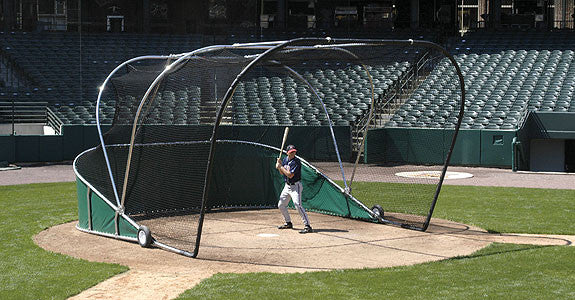In this time of having to stay home bound players are board and on the computer for many hours. But while I advocate for them getting outside and being active there certainly are some activities that they can do on that computer that will improve their mental knowledge of the game and maybe give them insight.
Here's a few that might work for you but please encourage your player and/or yourselves to look the sites using Google or any other search engine and specific questions.
Stay mentally sharp as well as physically getting ready for baseball and softball to start.
======================
http://www.freeonlinebaseballgames.com/
====================
Try this type activity while you are home safe.
Parents you need to kind of look at your kids coaches. A lot of coaches are just loud and still have the best of intentions for your players/children. Never allow volume to be equated with bullying, volume usually has little to do with it what you really need to know is what he says to the players and how he treats them then we may be looking at bullying.
This article could help anybody that reads it understand what is meant when bullying is talked about.
Bullying is a growing epidemic in sports. As sports parents, it's critical for you to be prepared to protect your young athletes. If you think this issue won't ever come up in your kids' sports careers, think again. Bully coaches are the number one topic parents write us about at Kids' Sports Psychology.
Have your kids ever had a coach who yelled at, insulted or intimidated them? It's possible they have, but were too embarrassed to tell you. It's important for you to be on the lookout for bully coaches and to take immediate action if you suspect your young athletes are being bullied.
Bully coaches target all kinds of young athletes. They can set their sights on kids who are overweight, small, or who lack confidence, for instance. These coaches also target gifted athletes because they believe their approach will "toughen up" their athletes.
It's important to keep in mind that most volunteer coaches are not trained. Many of them use teaching techniques that their coaches used with them. Some of them don't understand they're acting like bullies. Many coaches will change their behavior if you approach them in an appropriate manner. We've received letters of confession from coaches who say that once they understood how much their words and actions hurt their athletes, they changed their style.
Whether a coach's bullying is intentional or unintentional, your job as sports parents is the same. If your athletes are teased, excluded or otherwise treated badly by coaches, you need to take steps to help keep their confidence intact, stay focused under adversity, and remain in sports.
The bottom line, for you as parents: Be on the lookout for bully coaches and arm yourself with the information you need to take action.
Tip No.1: Don't Bunt With Two Strikes
This is a tough one when it fails. We have all seen it in youth baseball when the third baseman plays in close anticipating a bunt.
When the strike count gets to two, the coach will yell to the third baseman something like this: "Two strikes on the hitter. Move back so you are even with the base."
When the fielder moves back, depending on the ability of the batter, I love to give him another chance to bunt, given that the defense and opposing coach are sure the batter will not bunt. I have been successful with this and at other times it has failed.
One warning, if you try this. When your batter does fail, you will hear from all the "General Managers" in the bleachers.
More: 4 Biggest Mistakes Baseball Teams Make in Practice
Tip No.2: Catch Everything With Two Hands
I know most coaches and parents will hold me to task on this one. When my players are moving laterally reaching for a fly ball, I just want them to catch the ball any way possible.
I don't want my players thinking they have to catch everything with two hands if some catches are easier one-handed. If the shortstop is sprinting for a pop-up behind the third baseman, and has to reach for it, a one-handed catch works best.
When catching a pop-up hit right to a player, with little or no running, a two-handed catch works best. But too many coaches and parents overemphasize catching everything with two hands. Coaches need to have youth players practice catching balls with one and two hands.
Tip No.3: Don't Make the First or Third Out at Third Base
Tim McCarver won't invite me over to dinner on this one. I send my runner to third most of the time not worrying about how many outs we have.
I have my teams run the bases aggressively. We get thrown out at third and home more than other teams. But we also win more games than we lose.
More: Drill of the Week: Baseball Catching Drill for Kids
In youth baseball, every game has its share of wild pitches and passed balls. From my many years coaching third base I know that we have a great chance getting the runner home on a wild pitch or passed ball.
I hate ending the inning with a player who doesn't score from third base when some aggressive baserunning would have landed him on third and he would have scored.
Tip No.4: Bigger Baseball Gloves are Better
I was guilty of this when my oldest son played Little League. Every year I wanted to get him a bigger glove figuring the larger the glove, the better chance of the ball landing in the pocket. I was 100 percent wrong on this.
I remember going to Yankee Stadium with a close friend who had an "in" on everything and knew a lot of people. We had front row seats and before the game one of the Yankee infielders came over to say hello to my friend.
As they were talking, I could not keep my eyes off the player's glove and was amazed at how small the glove was. It just about outlined his hand.
I then learned that "glove control" is key for fielders. So, smaller rather than bigger gloves are better, especially for infielders, except the first baseman.
More: 5 Ways to Get Noticed at a Sports Camp
Tip No.5: Bat Your Best Hitter Third or Fourth
Years ago I remember in a few All-Star games, Willie Mays batted leadoff. I know the theory is that you get a couple of batters on base and the big guns will drive them in. I don't agree with this all the time.
I found that in youth baseball sometimes there is a large disparity with the talent of the players. Many times teams have one or two excellent players.
In youth baseball I prefer to bat my best hitter first or second. I cannot tell you how many times my team was down by a couple of runs in the last inning with the bottom of my batting order up.
If my best player batted third or fourth, I'd be doing everything I could to get him up but many times games ended up with my best hitter on deck. Now I like to bat my best player first or second. (I know you might think I'm sacrificing some runs but I love the idea of him getting an extra at bat a game.)
Like everything in coaching your talent at the moment will determine your move as the manager or coach. The term "thinking outside the box" has been overused in many instances.
But when coaching, you do want to think outside the box if it will give your players and team an advantage to succeed. Unpopular decisions may be the best decisions at the time you make them.
Marty Schupak
We are a new team and not all that good, how do I create a positive atmosphere and keep the players motivated and enjoying the game as they play.
The biggest deal here is that you don't worry and you make a huge deal out of the score not being important. What is important is each accomplishment is what you celebrate and just like hitting the ball and running or picking it up and throwing. Your letter indicates that your worrying about motivation, when in truth just playing to be all the motivation they need not sure hundred percent what you mean by motivation. But little kids like that normally just love to play, let them play in different positions and set goals that you know they're going to accomplish. Just like this past Sunday we had three goals--- for six out of the 12 players to hit the ball, to make one out in the field, and scored one run and we were able to do that because of the way the league is built - inning consists of three outs, seven runs, or batting through the order when we change. We know that were going to accomplish almost every one of these and this week we will have a little different set of goals, but that's what were you tell them are going to try to do and have fun. Then after the game we will make comment immediately away from the parents. So is just you and the coaches and the players talking to each other about what you got accomplished today and how much fun it was. Make no mistake about it all you're doing is creating organized play with this age group you're not creating baseball players you're creating social skills, fun, and organizational aspects that they will need to work with. But winning and losing is the last thing that needs to be even brought up.
The very first year I coached we were eight year olds in a 10 under league we were 0-44, and the thing they remember to this very day is that we went to Pizza Hut and celebrated a rainout. but by the time they were 12 years old we were 2nd in the BABE RUTH WORLD SERIES for 12 and under.
Let me know what you think and hope that I've created some thought process.
Coach Arnald Swift










